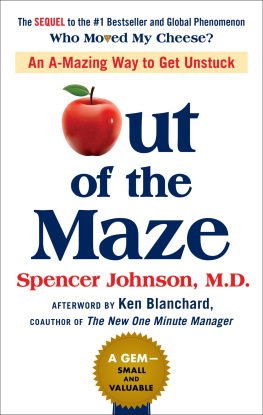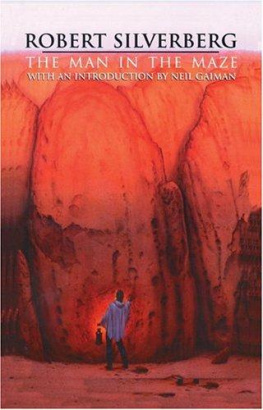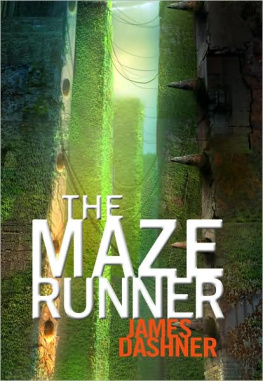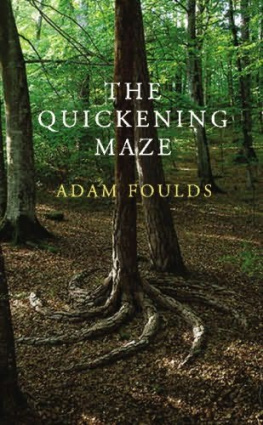The Magical Maze
Also by Ian Stewart
Natures Numbers
Does God play Dice?
Figments of Reality
The Collapse of Chaos
From Here to Infinity
Fearful Symmetry
Another Fine Math Youve Got Me Into
Game, Set, and Math
The Problems of Mathematics
Lifes Other Secret
The Magical Maze
SEEING THE WORLD
THROUGH MATHEMATICAL EYES
Ian Stewart

This book is printed on acid-free paper. 
Copyright 1997 by Ian Stewart. All rights reserved
First published in the United States in 1998 by John Wiley & Sons, Inc.
Published simultaneously in Canada
First published in Great Britain in 1997 by Weidenfeld and Nicolson
No part of this publication may be reproduced, stored in a retrieval system or transmitted in any form or by any means, electronic, mechanical, photocopying, recording, scanning or otherwise, except as permitted under Sections 107 or 108 of the 1976 United States Copyright Act, without either the prior written permission of the Publisher, or authorization through payment of the appropriate per-copy fee to the Copyright Clearance Center, 222 Rosewood Drive, Danvers, MA 01923, (508) 7508400, fax (508) 7504744. Requests to the Publisher for permission should be addressed to the Permissions Department, John Wiley & Sons, Inc., 605 Third Avenue, New York, NY 101580012, (212) 8506011, fax (212) 8506008, E-Mail: PERMREQ @ WILEY.COM.
This publication is designed to provide accurate and authoritative information in regard to the subject matter covered. It is sold with the understanding that the publisher is not engaged in rendering professional services. If professional advice or other expert assistance is required, the services of a competent professional person should be sought.
ISBN 0471-19297-X
10 9 8 7 6 5 4 3 2 1
CONTENTS

ILLUSTRATIONS
Martin Gardner (ed.), The Annotated Snark, Penguin, Harmondsworth, 1962, p. 79.
Martin Gardner, Mathematics, Magic, and Mystery, Dover Publications, New York, 1956, Fig. 55, p. 105.
DArcy Thompson, On Growth and Form, Cambridge University Press, Cambridge, 1942, Fig. 448, p. 913.
Przemyslaw Prusinkiewicz and Aristid Lindenmayer, The Algorithmic Beauty of Plants, Springer-Verlag, New York, 1990, Fig. 4.2, p. 101.
William Feller, An Introduction to Probability Theory and Its Applications, Vol. 1, John Wiley & Sons, Inc., New York, Fig. 5, p. 84.
Thomas Hfer, Modelling Dictyostelium Aggregation, Ph.D. Thesis, Balliol College, University of Oxford, 1996, Plate 1, p. 5.
Ian Stewart and Martin Golubitsky, Fearful Symmetry, Penguin, Harmondsworth, 1992, Fig. 9.11, p. 239; credited to Mathematical Intelligencer, Springer-Verlag, New York, Vol. 5, 4 (1983), p. 39.
H.M. Cundy and A.P. Rollett, Mathematical Models, Oxford University Press, Oxford, pp. 6162.
Keith Critchlow, Islamic Patterns, Shocken, New York, p. 188.
Istvn Hargittai, Quasicrystals, Networks, and Molecules of Fivefold Symmetry, VCH, New York, Fig. 14, p. 150.
Ian Stewart, Game, Set & Math, Blackwell, Oxford, Fig. 6.7, p. 83; credited to Science Photo Library.
G. Nicolis, Introduction to Nonlinear Science, Cambridge University Press, Cambridge, 1995, Fig. 1.11b, p. 17.
Hans Meinhardt, The Algorithmic Beauty of Sea Shells, Springer-Verlag, Berlin, 1995, Fig. 10.17, p. 178.
Shigeru Kondu and Rihito Asai, A reaction-diffusion wave on the skin of the marine angelfish Pomacanthus, Nature, 376 (1995), pp.765768, Fig. 3 (p. 767).
Hans Meinhardt, The Algorithmic Beauty of Sea Shells, Springer-Verlag, Berlin, 1995, Fig. 10.18, p. 179.
P.P. Gambaryan, How Mammals Run, John Wiley & Sons, Inc., New York, 1974.
H.-O. Peitgen, H. Jrgens, and D. Saupe, Chaos and Fractals, Springer-Verlag, New York, Plate 3, fol. p. 152.
Przemyslaw Prusinkiewicz and Aristid Lindenmayer, The Algorithmic Beauty of Plants, Springer-Verlag, New York, 1990, Fig. 1.24, p. 25.
H.-O. Peitgen, H. Jrgens, and D. Saupe, Chaos and Fractals, Springer-Verlag, New York, Fig. 5.48, p. 280.
Michael F. Barnsley and Lyman P. Hurd, Fractal Image Compression, A.K. Peters, Wellesley, MA, 1993, Plates 13 and 14, p. 53.
Ian Stewart, Game, Set & Math, Blackwell, Oxford, Fig. 9.2, p. 127.
Edward Ott, Chaos in Dynamical Systems, Cambridge University Press, Cambridge, Fig. 1.13, p. 15.
BEFORE YOU ENTER ...
Some scientists talk to the people; most, deplorably, dont. One who did was Michael Faraday, one of the greatest scientists of the nineteenth century. Faraday made enormous advances in the theories of electricity and magnetism in particular, he invented the electric motor and the dynamo. He provided the foundations upon which James Clerk Maxwell built his masterpiece, the mathematical equations of electromagnetic fields. From Maxwells work it was but a short step to the discovery of electromagnetic waves, from which thanks to numerous mathematicians, physicists, engineers, inventors, and entrepreneurs came radio, radar, and television.
The television connection closes a curious historical loop. Faradays career is intimately bound up with the Royal Institution of Great Britain, a building in London that housed its own scientific library, laboratories, and lecture theatre. He first became interested in electricity while he was working as an apprentice bookbinder, and read an article on the topic in the third edition of the Encyclopaedia Britannica. He was given a ticket to attend a lecture at the Royal Institution, given by the great chemist Sir Humphry Davy. The young Faraday was spellbound. He wrote to Davy asking for a job, and when one of the great mans assistants was sacked for getting into a fight, Faraday became Davys laboratory assistant. By 1820 he knew as much chemistry as anyone alive but his attention was turning to electricity once more.
In 1821 Faraday married Sarah Barnard, and settled permanently at the Royal Institution. For the next thirty years he carried out his epic work on electricity and magnetism, along with much else. And he did not neglect the general public. In 1826 the Royal Institution began a tradition that continues to this day: the Christmas Lectures for young people. They have been held every year since, with one short break during the Second World War. Faraday gave nineteen of the lectures between 1827 and 1860.
And here is where the circle closes, for in recent years the British Broadcasting Corporation has televised the Christmas Lectures.
The Magical Maze came into being because Professor Peter Day, Director of the Royal Institution, invited me to give the 1997 Christmas Lectures the 168th lectures in the series, and only the second time (shame!) that they have focused on mathematics. The opportunity to produce a book, based around the lectures and published simultaneously, proved irresistible. Of course the book had to be written before the lectures were given; moreover, the style of a book differs somewhat from the style of a lecture. So The Magical Maze treats the material in a rather different manner, with descriptions and pictures replacing demonstrations, apparatus, and interactive sessions with members of the audience. It is aimed at anyone who is interested in mathematics, not just young people. The lectures themselves are drawn from roughly half of the book: the other half is a bonus. (We havent, at the time of writing, decided exactly which topics will appear in the lectures, so I cant tell you


















